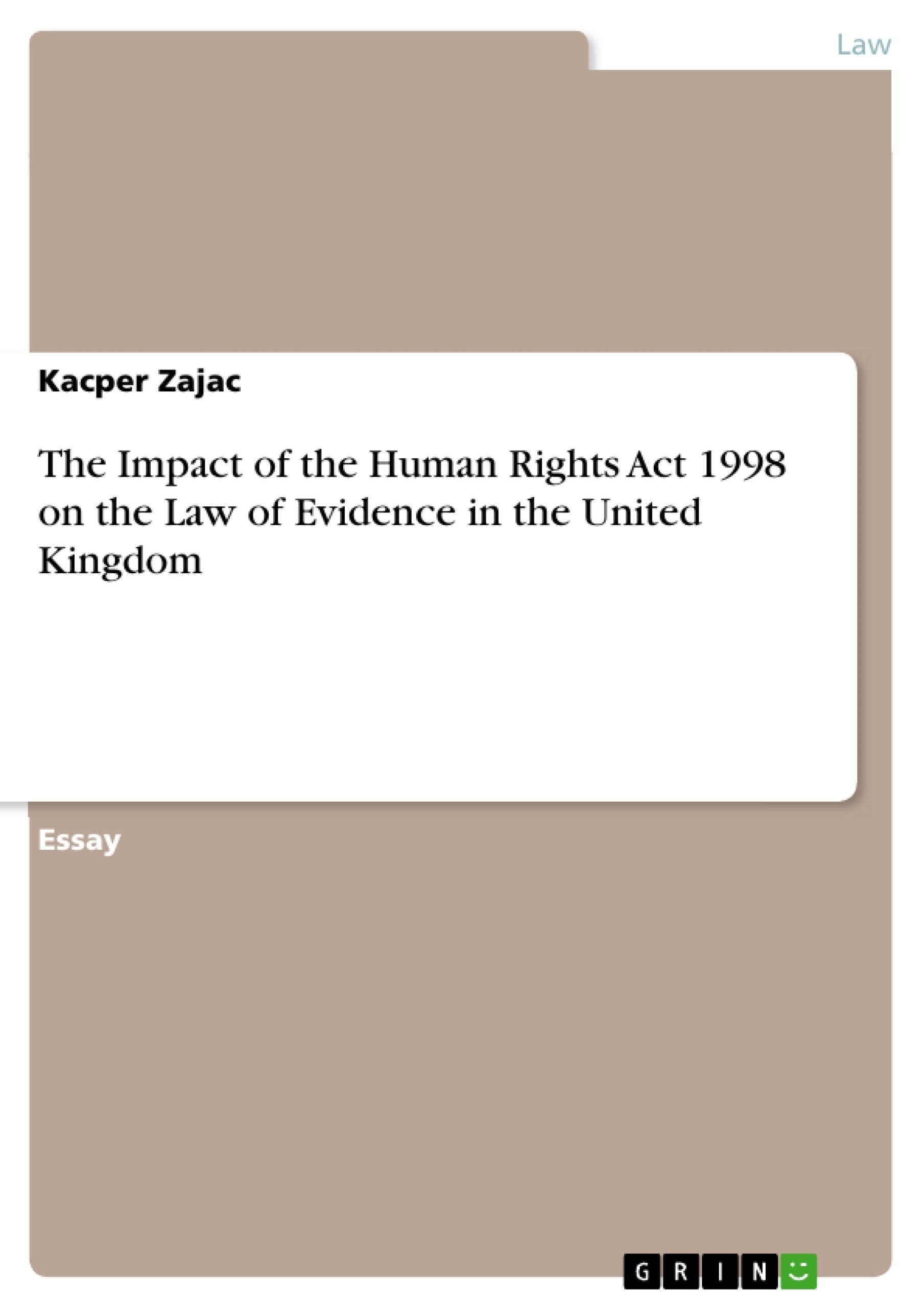The purpose of this essay is to critically examine the impact of the Human Rights Act 1998 on the operation of the burden of proof and on the area of law concerned with the exclusion of evidence obtained by illegal or improper means.
From the text: Presumption of innocence; Human Rights Act; Evidential Burden; Legal Burden.
Inhaltsverzeichnis (Table of Contents)
- Presumption of Innocence
- Human Rights Act
- Evidential Burden
- Legal Burden
- Exclusion of Evidence
- European Convention
- Entrapment
- Surveillance
- Conclusions
Zielsetzung und Themenschwerpunkte (Objectives and Key Themes)
This essay explores the impact of the Human Rights Act 1998 on the operation of the burden of proof and on the area of law concerning the exclusion of evidence obtained through illegal or improper means.
- The presumption of innocence in UK law
- The Human Rights Act 1998 and its impact on the burden of proof
- The distinction between evidential and legal burdens
- The application of the proportionality test in cases involving the burden of proof
- The role of the European Court of Human Rights in shaping the interpretation of the presumption of innocence
Zusammenfassung der Kapitel (Chapter Summaries)
- Presumption of Innocence: This chapter examines the presumption of innocence as a fundamental principle in a democratic society, highlighting its importance and the challenges it faces in the UK legal system. It also discusses the different types of burdens of proof and the standards of proof that apply to them.
- Human Rights Act: This chapter explores the impact of the Human Rights Act 1998 on the presumption of innocence, particularly in relation to the principle of parliamentary sovereignty and the compatibility of UK law with the European Convention on Human Rights.
- Evidential Burden: This chapter focuses on the concept of the evidential burden, discussing the impact of the HRA on the burden of proof imposed on defendants in various criminal offences. It also examines the application of the proportionality test and its implications for the presumption of innocence.
- Legal Burden: This chapter analyzes the legal burden of proof, examining cases where it has been upheld despite the presumption of innocence. It highlights the role of the courts in balancing the interests of the community and the protection of individual rights.
Schlüsselwörter (Keywords)
This essay focuses on the following keywords: presumption of innocence, Human Rights Act 1998, burden of proof, evidential burden, legal burden, proportionality test, European Convention on Human Rights, exclusion of evidence, illegal or improper means, and case law.
- Quote paper
- Kacper Zajac (Author), 2013, The Impact of the Human Rights Act 1998 on the Law of Evidence in the United Kingdom, Munich, GRIN Verlag, https://www.grin.com/document/353644



